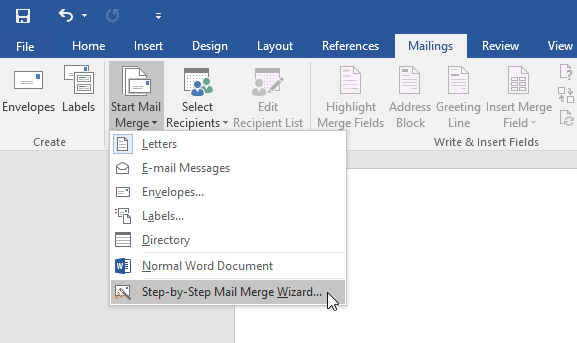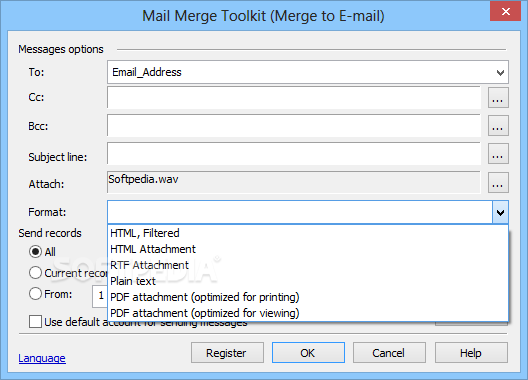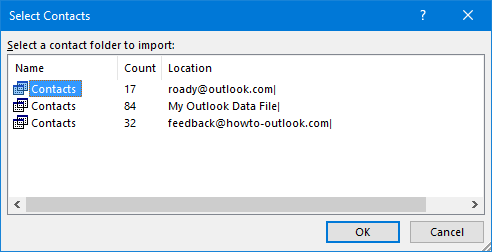
- #MAIL MERGE TOOLKIT WORD 2016 HOW TO#
- #MAIL MERGE TOOLKIT WORD 2016 PDF#
- #MAIL MERGE TOOLKIT WORD 2016 SOFTWARE#
- #MAIL MERGE TOOLKIT WORD 2016 DOWNLOAD#
The utility has flexible options for selecting attached files.You can attach the same or different files to all or only some of the mailing messages.in the recipient addresses, including CC and BCC.You can insert data from a table anywhere in the email:.You can create this table in Microsoft Office Excel or another program using tabular data and contact databases. The data source is a standard CSV spreadsheet file.

Such templates can be easily created directly in Microsoft Outlook in the form seen by the recipients.
#MAIL MERGE TOOLKIT WORD 2016 SOFTWARE#
This software for Microsoft Outlook creates personalized email messages by adding any data and various attachments to the email template. Unlike standard Microsoft Office Word mail merge tools, our merger provides more capabilities.
#MAIL MERGE TOOLKIT WORD 2016 HOW TO#
How to automatically personalize email content

#MAIL MERGE TOOLKIT WORD 2016 PDF#
#MAIL MERGE TOOLKIT WORD 2016 DOWNLOAD#
It easily integrates in the Office suite, accessed at the press of a button, and with a quick configuration process.You'll need to download this mail merge software to personalize your bulk mailing messages. A few last wordsīottom line is that office work implies heavy communication, and forwarding of multiple items directly from the Office environment with Mail Merge Toolkit becomes a walk in the park. There’s an option to include all records, which can take some time, or manually write down the range, with the possibility to use default account for sending messages. Last but not least, the range of emails to merge needs to be specified. You can also include new attachments which can be under any file format. These include title, first name, last name, company name, address line, city, email address, and other various contact details to filter by, with only one possible selection.Īnother set of presets is encountered in the email format type, with entries for HTML, filtered, HTML attachment, RTF attachment, Plain text, or PDF attachment. Most of them come with a browse dialog, such as Cc, Bcc, subject line, and attachment, while the destination field is fitted with several default forms selected from a drop-down menu. Several scan options need to be configured for the process to work.

Needless to say that you need to be logged into your email accounts. Once launched, a small window shows up with a few configuration fields. It’s launched from the Mailings entry in the ribbon menu and aims to extend the default mail merging capabilities of Microsoft Outlook, Microsoft Word and Microsoft Publisher, so it’s only found in these components. For a quick start there’s a built-in wizard which guides you through a few steps where you get to set up initial details and get to know the set of features better. Since it’s an Office add-in, you need to have the host suite installed on your computer, and restart any document instances already running before the application can fully integrate. This includes mail management, for which you might need Mail Merge Toolkit in case you’re fond of Microsoft’s Office suite. Office suites quickly appeared, combining the functionality, and flexibility of communication along with desktop comfort into a single application. One of the basic computer activities is handling text, and this quickly evolved in a daily necessity.


 0 kommentar(er)
0 kommentar(er)
